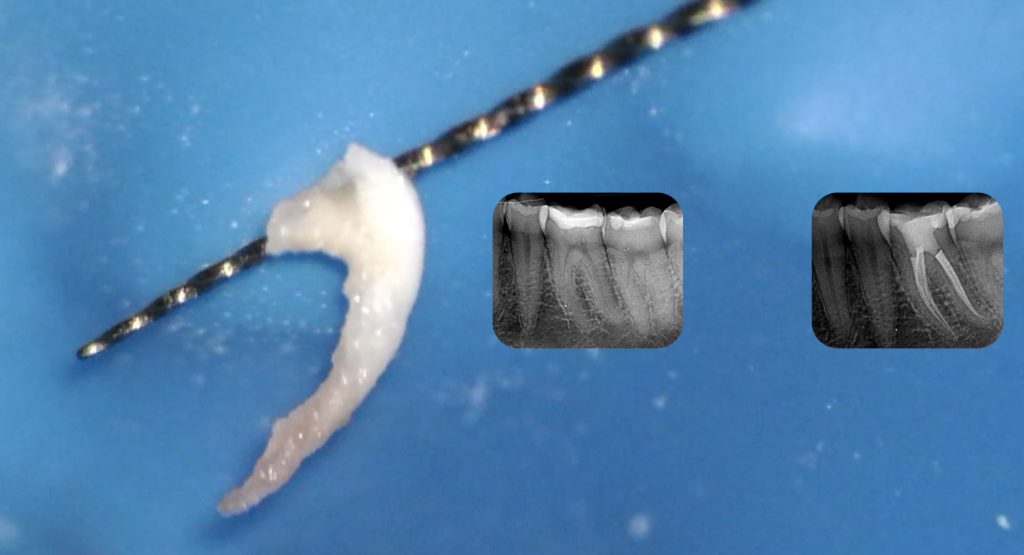
Conservative Shaping with MG3
19/07/2021
Marc Habib
Warning: Undefined variable $post in /var/www/vhosts/styleitaliano-endodontics.org/endodontics.styleitaliano.org/wp-content/plugins/oxygen/component-framework/components/classes/code-block.class.php(133) : eval()'d code on line 2
Warning: Attempt to read property "ID" on null in /var/www/vhosts/styleitaliano-endodontics.org/endodontics.styleitaliano.org/wp-content/plugins/oxygen/component-framework/components/classes/code-block.class.php(133) : eval()'d code on line 2
Is it possible to talk about a conservative approach during shaping?
It has been suggested by Clarck and Khademi in 2010 that the prognosis of the tooth after root canal treatment depends on the capacity to preserve peri cervical dentine (PCD) and rebuilt the tooth with as much as possible healthy tooth structure .
Since that famous article there was a tendency to start reducing taper during the shaping procedure and standard started shifting from 25 8% taper to 25 6% or some time as well 20 6% taper for more dentine preservation.
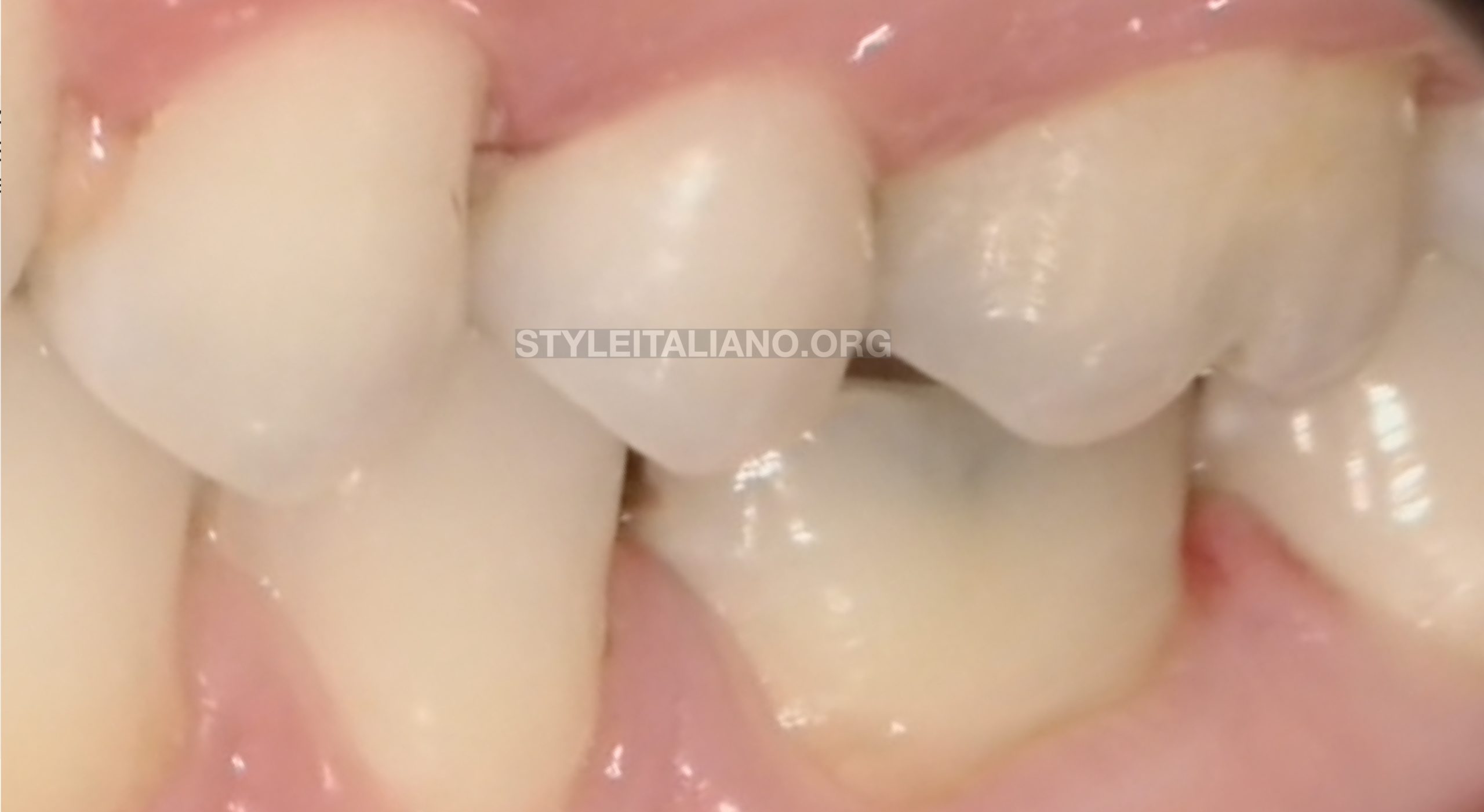
Fig. 1
A female patient presented for a continuous pain on her lower left first molar tooth # 36.
She was complaining of a history of high sensitivity of this molar with buccal recession of the gum with cervical root exposure.

Fig. 2
Pre operative xray showing old white filling with normal aspect of the pulp chamber.
Mesial root revealed relatively narrow and long canals
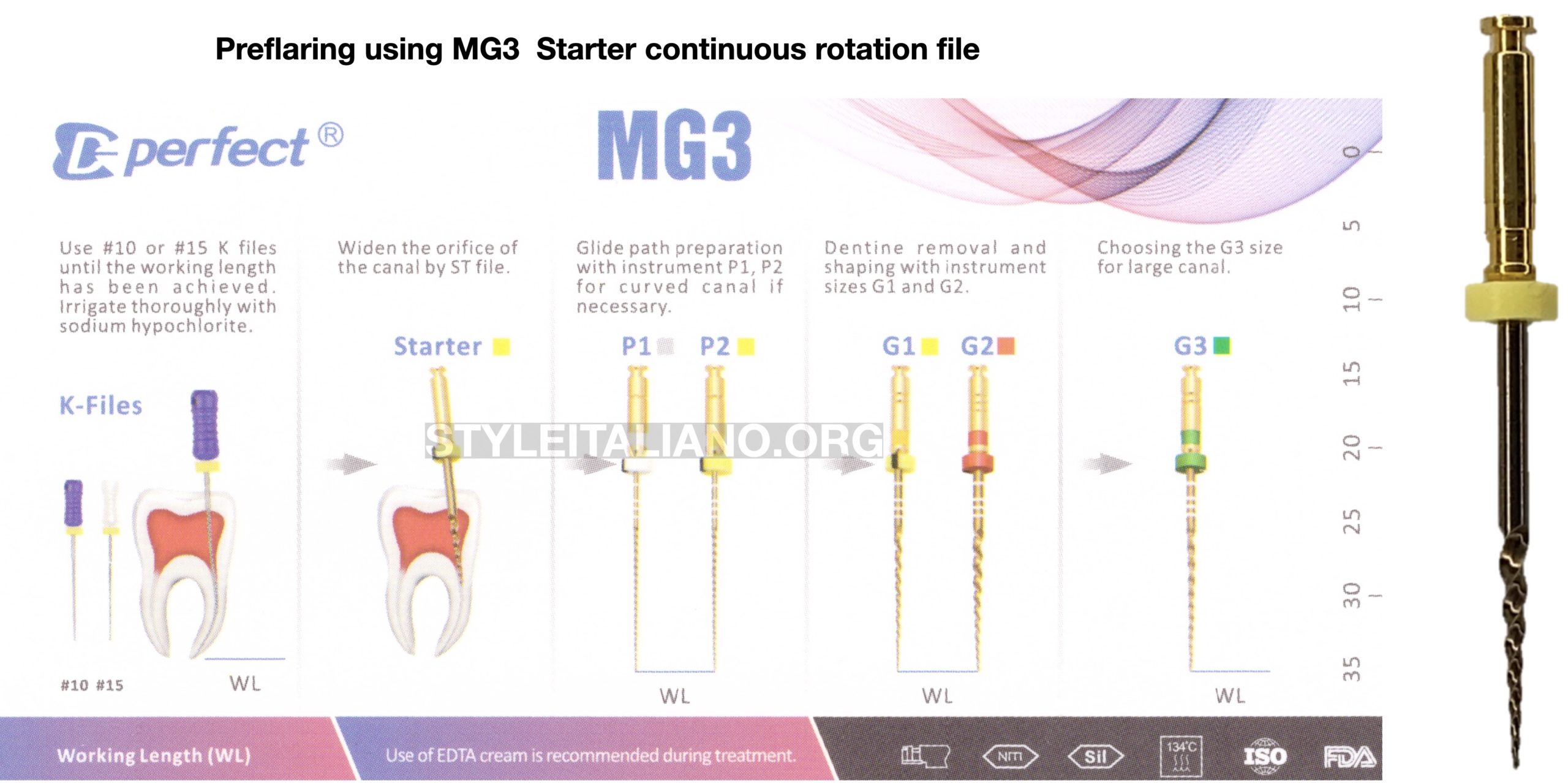
Fig. 3
Preflaring using MG3 Starter continuous rotation file
Preflaring using Starter file 20 10% D Perfect®
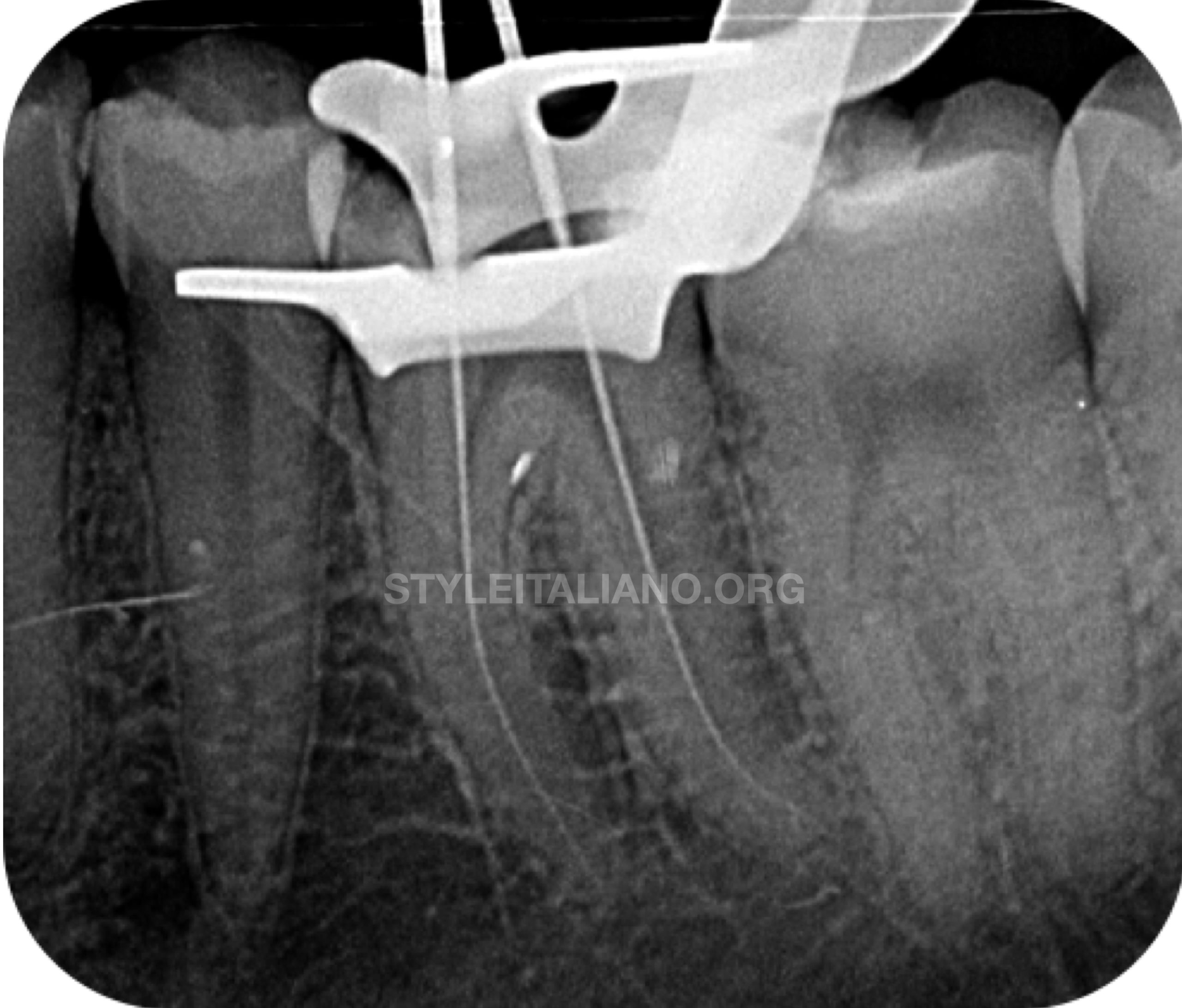
Fig. 4
Working length Xray
Mechanical glide path using p1 file 16 2% D Perfect®
Mechanical glide path using p2 file 19 2% D Perfect®
Shaping using G1 file 20 4% D Perfect®

Fig. 5
Shaping using G1 file 20 4% D Perfect®
Final obturation access cavity view showing 3 root canals orifices
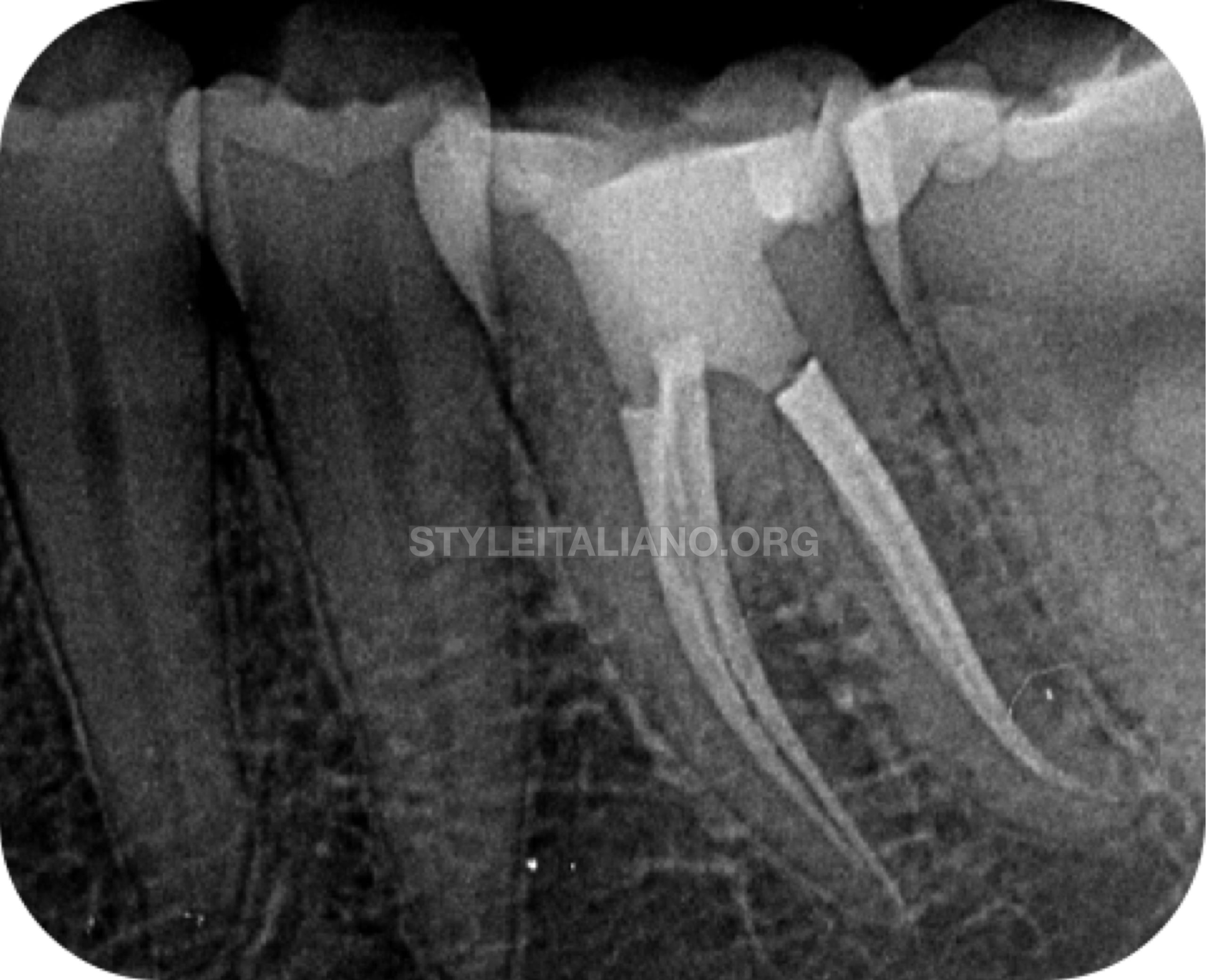
Fig. 6
Final x-ray
Conclusions
Since the introduction of NiTi instruments and their metallurgical remarkable properties, it became possible to engineer
instruments with greater tapers than 2%, which is the norm for stainless steel hand instruments used with the step back and crown down shaping techniques.
The main characteristics of this NiTi alloy are memory shape and superior elasticity. Shaping file were presented with tapers going up to 12%
Today’s shaping can be more conservative than in the late 90s with finishers having 4% and 6% taper with heat treatments of NiTi eliminating the memory shape characteristic. This will give files the possibility to be prebended in room temperature making them more versatile during the shaping procedure.
Bibliography
Clark. D,DDS, Khademi J,DDS. Modern molar endodontics access and directed dentine conservation.Dent Clin N Am (2010) 259-273.
Buchanan LS. The standardized-taper root canal preparation – Part 1. Concepts for variably tapered shaping instruments. International Endodontic Journal,33, 516–529, 2000
Hulsmann M, Peters O, Dummer P. Mechanical preparation of root canals: shaping goals, techniques and means. Endodontic Topics 2005, 10, 30–76

